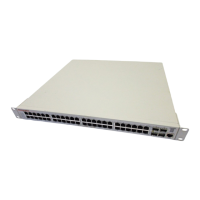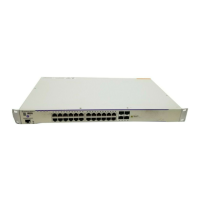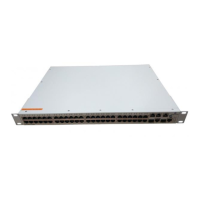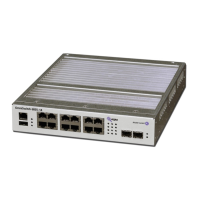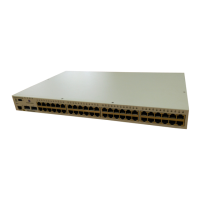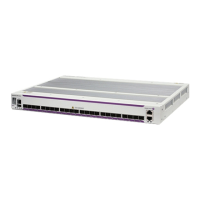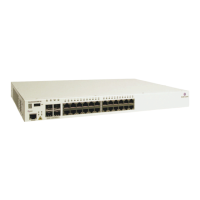OmniSwitch AOS Release 8 Network Configuration Guide December 2017 page 6-1
6 Configuring Spanning Tree
Parameters
The Spanning Tree Algorithm and Protocol (STP) is a self-configuring algorithm that maintains a loop-
free topology on a network. STP helps to provide data path redundancy and network scalability. The
OmniSwitch STP implementation, based on the IEEE 802.1D standard, distributes the Spanning Tree load
between the primary management module and the network interface modules. This functionality improves
network robustness by providing a Spanning Tree that continues to respond to BPDUs (Bridge Protocol
Data Unit) and port link up and down states in the event of a fail over to a backup management module or
switch.
The OmniSwitch implementation also incorporates the following Spanning Tree features:
• Configures a physical topology into a single Spanning Tree to ensure that there is only one data path
between any two switches.
• Supports fault tolerance within the network topology. The Spanning Tree is reconfigured in the event
of a data path or bridge failure or when a new switch is added to the topology.
• Supports two Spanning Tree operating modes: flat (single STP instance per switch) and per-VLAN
(single STP instance per VLAN). The per-VLAN mode can be configured to interoperate with the
proprietary Per-Vlan Spanning Tree (PVST+) feature of Cisco.
• Supports three Spanning Tree Algorithms; 802.1D (STP), 802.1w (RSTP), and 802.1Q 2005 (MSTP).
• Allows 802.1Q tagged ports and link aggregate logical ports to participate in the calculation of the STP
topology.
• Provides loop-guard security to prevent network loops caused due to inconsistencies in data traffic.
The Distributed Spanning Tree software is active on all switches by default. As a result, a loop-free
network topology is automatically calculated based on default Spanning Tree bridge, VLAN, and port
parameter values. It is only necessary to configure the Spanning Tree parameters to change how the
topology is calculated and maintained.

